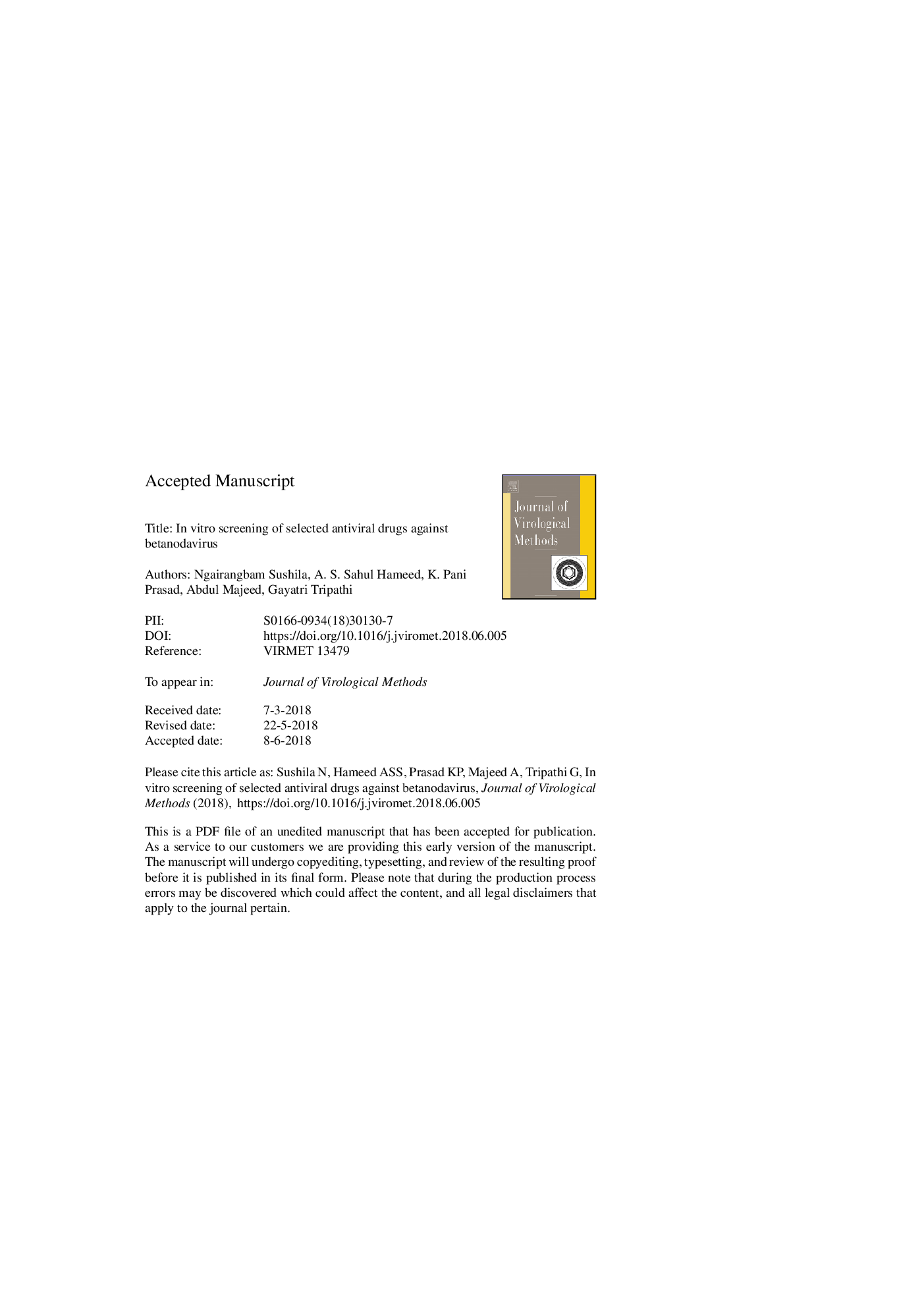| Article ID | Journal | Published Year | Pages | File Type |
|---|---|---|---|---|
| 8747003 | Journal of Virological Methods | 2018 | 25 Pages |
Abstract
The inhibitory effects of ammonium chloride (NH4Cl) and chlorpromazine hydrochloride on betanodavirus were evaluated on Sahul Indian sea bass kidney (SISK) cell line. The cytotoxicity of different concentrations of NH4Cl (0.1â¯mM, 1â¯mM, 10â¯mM, 100â¯mM and 500â¯mM) and chlorpromazine hydrochloride (1â¯Î¼M, 10â¯Î¼M, 100â¯Î¼M, 200â¯Î¼M and 500â¯Î¼M) were assessed in SISK cells using different cytotoxic assays. Among the selected concentrations, 0.1â¯mM, 1â¯mM and 10â¯mM of NH4Cl and chlorpromazine hydrochloride at the dose of 1â¯Î¼M, 10â¯Î¼M and 100â¯Î¼M were found to be non-toxic to the SISK cell line and same were chosen for the trials against nodavirus. The presence of nodavirus in the infected cells was confirmed by cytopathic effect (CPE) and RT-PCR (Reverse transcriptase PCR). NH4Cl of 1â¯mM and 10â¯mM, and chlorpromazine hydrochloride of 10â¯Î¼M and 100â¯Î¼M could successfully inhibit betanodavirus infection in SISK cells, which was confirmed by indirect ELISA and real-time PCR analysis. The result further suggested that the chlorpromazine hydrochloride drug could be more effective in inhibiting the betanodavirus with much lower dose than NH4Cl which was more effective at a higher dose. The present study thus suggested that NH4Cl and chlorpromazine hydrochloride drugs could be successfully used for controlling the nodavirus infection in aquaculture.
Related Topics
Life Sciences
Immunology and Microbiology
Virology
Authors
Ngairangbam Sushila, A.S. Sahul Hameed, K. Pani Prasad, S. Abdul Majeed, Gayatri Tripathi,
